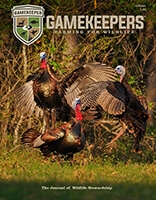In the centuries since firearms were first developed, progress has been measured in the mechanical accomplishments that men used to meld advancing technology. The diminutive .22 rimfire is no exception. First developed in 1857, the .22 short was designed for small “purse” and pocket pistols. It was woefully underpowered. The tiny bullet was propelled by a bit of black powder and rumors were it had no real effective range, but a shot from it was more effective than harsh words. The first bullets weighed an unimpressive 29-grains and were pushed along at about 800 feet per second.

David Hawkins
The first improvement came in 1857, when J. Stevens lengthened the case and increased the powder charge behind a heavier 30-gr projectile. It was dubbed the “.22 Long” and it became a sweeping success. Not only were handguns chambered in the new round, so were rifles. The rifle’s longer barrels improving both accuracy and bullet velocity.
Jump ahead to 1887, when technology was rampant and the J. Stevens Arms company took the .22 long(l) cases and added a heavier bullet, 40-grs, ahead of improved powder, and the .22 long rifle(lr) was born. Today the .22 long rifle remains the standard by which all other rimfire cartridges are measured. Bullet weights range from 36 to 40 grains with a muzzle velocity of around 1,250 feet per second. Of course velocity depends on barrel length.
Winchester introduced the .22 Winchester rimfire magnum in 1956 and the round has found a solid foothold with the American shooting public. Known as the .22WRM it is available in both rifle and handgun configurations.
In an age when every firearm seems to have to be justified, deer rifles, turkey guns, concealed carry, home defense, etc. Can’t we own a .22 simply because they are fun to shoot? By all standards .22 rimfire ammunition remains relatively inexpensive and available (aside from a couple of panic-fueled buying spells over recent years).

The .22 WRM (Winchester rimfire magnum) is a powerful hunter and extends the range of the .22 long-rifle. (David Hawkins)
Targets are as endless as the shooters imagination. Tin cans are a perennial favorite, as are paper targets playing cards, skeet birds, and well you get the picture. Bullseye targets are a popular choice as are small game silhouettes. Commercial targets include falling plates and metallic spinners. What’s behind the target is critically important. Avoid any targets made of glass and insure no rocks or hard objects might cause ricochets in the bullet impact zone.
Looking at available ammunition we find a plethora of brand names and bullet types. All types are okay for plinking, but some are better suited to hunting. Hollow points outperform solid-nose in the squirrel woods, but in the hands of a good marksman with a decent rifle either one will achieve success.
“Rimfires play a significant role in the firearms industry, with millions sold each year,” said Linda Powell, Marketing Representative for Mossberg firearms. “Our distributors shipped over $100 million in rimfires during the first ten months of 2023. Long a tradition, most hunters and shooters are given or purchase a rimfire rifle as their first firearm. A rimfire is a great training tool, fun to shoot, versatile, and a relatively inexpensive option due to the lower cost of ammunition. And we know that there is a tremendous sense of brand loyalty to the first firearm that an individual shoots. Mossberg believes this is a category that is significant in the marketplace and in our family of firearm offerings.”

Plinking with a .22 is literally fun for everyone. Targets are easy to find: from tin-cans, balloons, or drawn paper targets, to clay pigeons, or steel spinning targets. (David Hawkins)
There have been serious discussions about the proper age to introduce children to shooting “real” guns. I approach this subject after having sought the advice of several child psychologists. The conscious of opinion is that 10 to 15 is a good age as some children develop more quickly than others. Girls seem to accept responsibility sooner than boys. All agreed the human brain is not fully developed until the 20s. So it is up to the parents when the trigger is pulled for the first time.
A high school shooting coach said she is completely comfortable around armed students when shooting skeet or sporting clays. Children are eager to do the right thing, and do it well. Sport shooting teaches respect for the gun, respect for authority and responsibility. It is a good way to start hunting and readying for using more powerful weapons. An understanding of conservation and a respect for game and life just comes naturally.

Serious .22 target shooters love the caliber because of the inexpensive ammunition when compared to other calibers. It is used in many competitions – all the way up to the Olympic Games. (David Hawkins)
Over the decades, many accolades have been passed around. Winchester earned the moniker as the “gun that won the West.” Colt was tagged as “the gun that made all men equal.” Remington touted to be America’s oldest gun maker.
The M-1 Garand helped win WW-II as it was according to General George Patton as “The finest battle instrument ever devised.” All well-deserved accolades, but I feel that the .22 rimfire, in all its combinations and variations has been the biggest influence on sport shooting and hunting in America. The lowly .22 in its simplicity has, and continues to teach marksmanship and safe gun handling. Most hunters will affirm it was the .22 and squirrel hunting that precluded their forays afield for bigger more impressive game. The .22 has been a farm tool, a home defender, a predator killer and an inspiration to generations of shooters and is positioned to continue for the foreseeable future. Shoot often and shoot safely.
Join our weekly newsletter or subscribe to Gamekeepers Magazine.
Your source for information, equipment, know-how, deals and discounts to help you get the most from every hard-earned moment in the field.









